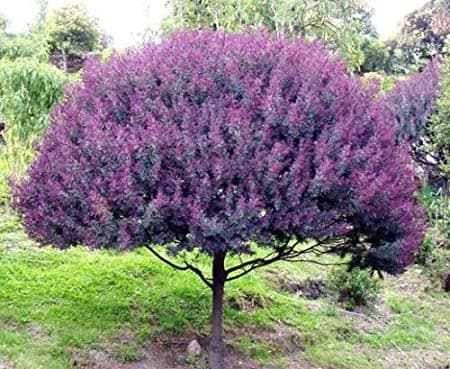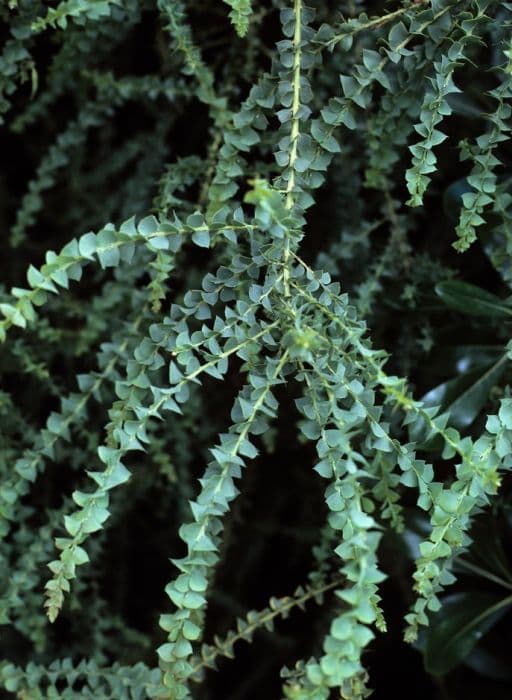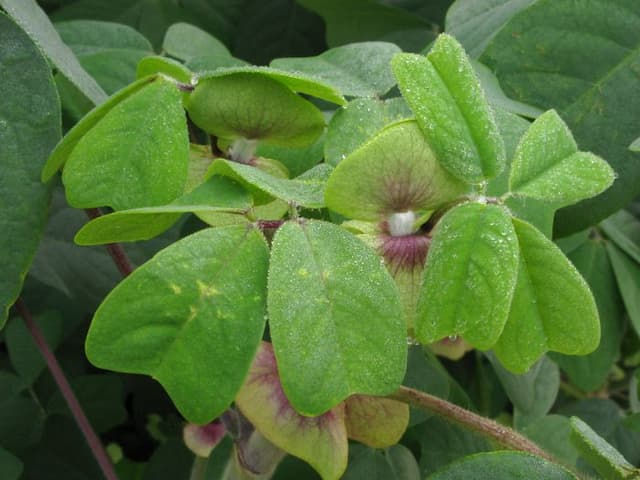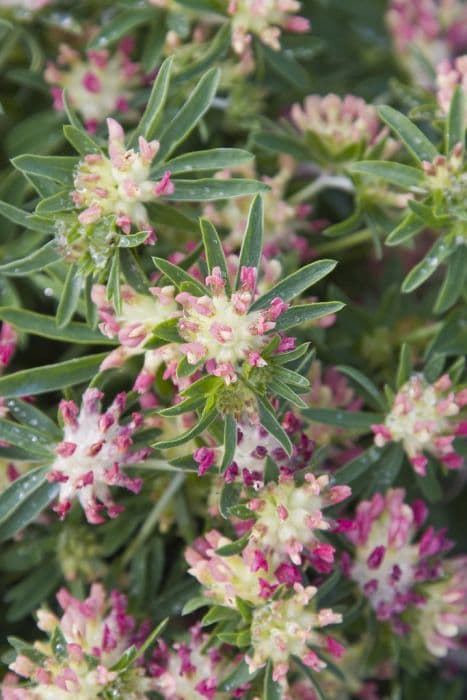Grass pea Lathyrus sativus

ABOUT
Lathyrus sativus, widely known as grass pea, is an annual plant that typically exhibits a bushy appearance with slender stems. The stems are winged and climb or spread, often requiring support. Its leaves are compound and consist of one to three pairs of leaflets that are narrow and lance-shaped. Tendrils are present that the plant uses to cling to supports. The flowers of grass pea are quite distinctive—butterfly-like in shape and are most commonly a pale blue color, but they can also be found in white and pink variations. Each flower has a standard or banner petal, wings, and a keel, similar to other legume family flowers. The flowers are borne either singly or in clusters. Following flowering, the grass pea produces pods which are flat and slightly curved, containing seeds. The seeds within the pods are typically rounded and can vary in color from yellow, green, brown, to black, containing the plant's future generation. The foliage is bright green in color, which often provides a striking contrast to the soft-colored blooms, making it an attractive addition to gardens where it is grown for both ornamental and culinary uses.
About this plant
 Names
NamesFamily
Fabaceae.
Synonyms
Grass Pea, Chickling Vetch, White Vetch, Chickling Pea, Indian Pea, White Peavine, Almorta.
Common names
Lathyrus sativus var. albus, Lathyrus sativus var. amphicarpos, Lathyrus sativus var. axillaris, Lathyrus sativus var. fischeri, Lathyrus sativus var. flavus, Lathyrus sativus var. leucospermus, Lathyrus sativus var. pallidus, Lathyrus sativus var. salmoneus, Lathyrus sativus var. sativus, Orobus sativus.
 Toxicity
ToxicityTo humans
Lathyrus sativus, commonly known as grass pea, contains a neurotoxic amino acid called β-ODAP (beta-N-oxalyl-L-α,β-diaminopropionic acid) or ODAP. This compound can cause a condition known as lathyrism when consumed in large quantities or as a significant part of the diet over a long period. Symptoms of lathyrism may include weakness and paralysis of the lower limbs, and in severe cases, it can lead to permanent paralysis and muscle wasting. Acute toxicity from short-term consumption is rare, but the risk increases with the quantity consumed and the duration of the diet heavily based on this plant.
To pets
Lathyrus sativus, commonly known as grass pea, also poses a risk of toxicity to pets if ingested in large amounts over time. The same neurotoxic amino acid, β-ODAP, that affects humans can lead to a condition in pets known as lathyrism. Symptoms in animals can mirror those found in humans, such as weakness, difficulty walking, and potentially permanent hind limb paralysis if consumed as a significant part of their diet over an extended period. It's important to avoid feeding pets substantial amounts of grass pea to prevent these toxic effects.
 Characteristics
CharacteristicsLife cycle
Annuals
Foliage type
Deciduous
Color of leaves
Green
Flower color
Blue
Height
3 feet (0.91 meters)
Spread
1 foot (0.3 meters)
Plant type
Climber
Hardiness zones
5
Native area
Mediterranean
Benefits
 General Benefits
General Benefits- High Nutritional Value: Provides essential nutrients such as proteins, fiber, and minerals.
- Sustainable Crop: Requires minimal inputs such as water and fertilizers compared to other legumes.
- Drought Resistance: Adapts well to arid conditions making it suitable for cultivation in drought-prone areas.
- Soil Improvement: Fixes atmospheric nitrogen to enrich soil fertility through its symbiotic relationship with rhizobia bacteria.
- Food Security: Can be an important crop in areas with limited food resources, contributing to local diets and nutrition.
- Animal Fodder: Used as animal feed, especially for cattle and poultry, due to its high protein content.
- Green Manure: When ploughed back into the field, it enhances soil organic matter and nutrients.
- Cultural Significance: Holds traditional importance in some cultures where it is used in various local cuisines.
- Gluten-Free: Serves as a gluten-free food option for people with gluten intolerance or celiac disease.
 Medical Properties
Medical Properties- Neuroprotective effects: Lathyrus sativus has been studied for neuroprotective properties that might be beneficial in neurological conditions.
- Antioxidant properties: The seeds contain antioxidants that help in scavenging free radicals, which can potentially reduce oxidative stress in the body.
- Nutritional supplement: Due to its high protein content, it has been used to supplement diets in areas where other protein sources may be scarce, although caution is advised due to potential toxicity from excessive consumption.
 Air-purifying Qualities
Air-purifying QualitiesThis plant is not specifically known for air purifying qualities.
 Other Uses
Other Uses- Lathyrus sativus, commonly known as grass pea, can be used as a famine food, typically grown and consumed in times of food scarcity due to its hardiness and ability to grow in challenging environments.
- The seeds of grass pea are sometimes used as animal feed, particularly for poultry and cattle, as a protein-rich supplement to their diet.
- In some countries, grass pea seeds are roasted and ground into flour to make bread or other local dishes, providing a gluten-free alternative to wheat flour.
- The flowers of the grass pea plant are often used for ornamental purposes in gardens, owing to their delicate and attractive appearance.
- Grass pea plants are used in crop rotation systems to improve soil health, as they are able to fix nitrogen and thereby enrich the soil.
- Grass pea straw, post-harvest, can be utilized as fodder for livestock, contributing to the sustainability of agricultural practices.
- The plant can act as a cover crop, suppressing weeds and preventing soil erosion during the off-season in agricultural land.
- Being drought-resistant, grass pea is planted for soil stabilization in arid regions where other plants might not survive.
- The stems and leaves of grass pea can be composted and used as organic fertilizer, returning nutrients to the soil.
- In some traditional practices, grass pea plants are used as a natural pest repellent, where farmers grow them alongside other crops to protect against certain insects.
Interesting Facts
 Feng Shui
Feng ShuiThe grass pea is not used in Feng Shui practice.
 Zodiac Sign Compitability
Zodiac Sign CompitabilityThe grass pea is not used in astrology practice.
 Plant Symbolism
Plant Symbolism- Survival: Lathyrus sativus, commonly known as grass pea, is known for its ability to survive in drought conditions, making it symbolize resilience and adaptability.
- Nourishment: Being an edible legume, grass pea represents sustenance and the provision of essential needs.
- Caution: Since the grass pea can be toxic when consumed in large quantities due to a neurotoxin it produces, it can also symbolize the idea of moderation and the potential dangers of excess.
- Hope: The grass pea, often grown in poor soil conditions where other crops fail, is a symbol of hope and the possibility to thrive amidst adversity.
 Water
WaterThe grass pea, commonly known as chickling vetch, prefers consistent moisture levels, so water it once a week with about 1 inch of water. During hot or windy weather, you might need to water more frequently to keep the soil from drying out, especially if the plant is in well-draining soil. To avoid waterlogging and potential root rot, ensure that the soil is moist but not saturated. If you're using a container for your chickling vetch, it’s important to ensure that excess water can drain out easily.
 Light
LightChickling vetch requires full sun to flourish, so it's best to place it in a location where it can receive at least 6 to 8 hours of direct sunlight daily. Areas with bright, unfiltered sunshine will ensure optimal growth and flowering. Avoiding deep shade is crucial as it can lead to poor flowering and leggy plants.
 Temperature
TemperatureChickling vetch thrives best in a temperature range of 60°F to 70°F. It can survive minimum temperatures down to about 20°F but growth will be significantly slowed. The maximum temperature for healthy growth is about 85°F. These plants prefer cooler weather and can tolerate light frosts, making them suitable for early spring and late fall planting.
 Pruning
PruningPruning chickling vetch is necessary to promote bushier growth and prevent legginess. Pinch back the growing tips once the plant has reached about 4 to 6 inches in height. Regularly remove spent flowers to encourage continuous blooming. The best time for pruning is in the late winter or early spring before new growth begins.
 Cleaning
CleaningAs needed
 Soil
SoilGrass pea thrives in a well-drained, loamy soil with a pH between 6.0 and 7.5. A mix of two parts garden soil, one part compost, and one part perlite or sand would create an ideal growing medium for this plant.
 Repotting
RepottingGrass pea does not need frequent repotting; it's typically done every 1 to 2 years, or when the plant becomes root-bound.
 Humidity & Misting
Humidity & MistingGrass pea prefers moderate humidity levels and can tolerate the average humidity found in most homes without requiring any special attention.
 Suitable locations
Suitable locationsIndoor
Ensure full sun, well-draining soil, and occasional watering for grass pea.
Outdoor
Plant grass pea in full sun, use loamy soil, and water regularly.
Hardiness zone
6-9 USDA
 Life cycle
Life cycleThe life of Lathyrus sativus, commonly known as grass pea, begins with seed germination, where the embryo in the seed becomes activated and sprouts when environmental conditions are favorable, typically requiring moist soil. Following germination, the seedling stage is characterized by the emergence of the radicle (root) and plumule (shoot), which develop into a root system and vegetative stems respectively. As the plant grows, it enters the vegetative stage, establishing a network of leaves and stems that allow for photosynthesis and continued growth. The reproductive stage follows, where the plant develops flowers; grass pea has distinct purple, blue, or white flowers that are self-pollinated, leading to the production of seeds within pods. After pollination and fertilization, seed development occurs within the pods that eventually dry and release seeds, completing the life cycle. The plant then senesces, which means it dies after seed production, although in some climates, it may regrow from rootstock the following season.
 Propogation
PropogationPropogation time
Spring-Early Summer
Lathyrus sativus, commonly known as grass pea, is typically propagated through seeds. Seed propagation is the most popular and straightforward method for this plant. The best time for sowing grass pea seeds is in early spring, as soon as the soil can be worked, although timing can vary based on local climate conditions. To propagate, first, seeds should be surface sown onto a well-drained soil mix and lightly covered with soil. They need to be kept moist, but not waterlogged, to facilitate germination, which usually occurs within 2 to 3 weeks. Once seedlings have developed a few true leaves and the risk of frost has passed, they can be transplanted outdoors to a sunny spot with well-draining soil, spaced about 6 inches (approximately 15 centimeters) apart to allow for proper growth.









